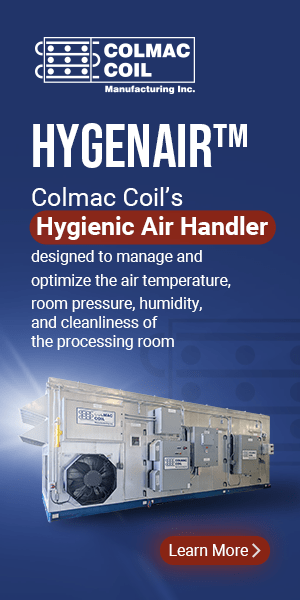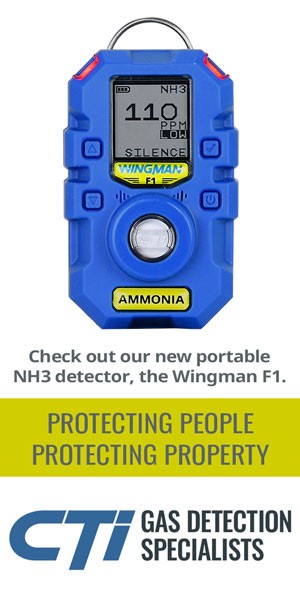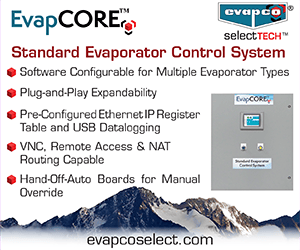PSM Safety and Compliance in the Age of Pandemics
BILL LAPE, SCS ENGINEERS
Our world has turned upside down in 2020: close to 9.5 million confirmed cases of COVID-19 in the U.S; over 233,000 deaths in the U.S.; people being quarantined or sheltering in place; social distancing; non-essential businesses shut with skeleton crews; essential businesses having to implement enhanced sanitation procedures, social distancing, PPE requirements, employee health screening; visitor restrictions; the list goes on and on and on.The distractions that occur because of all of this often cause us to forget some of our core safety programs, including process safety management (PSM) of our ammonia refrigeration systems. We are tempted to think that the immediate concerns with COVID-19 are a higher priority than our management of change, our hazard analyses, our system and equipment inspection testing and maintenance, and our operator training, to name just a few things.
In reality, these safety programs that are part of PSM program are just as important today, if not more so. With much of our workforce sidelined due to illness, or sheltering in place due to fear, shortcuts are often taken to keep the “Fringles” rolling off of the production lines. The safety programs often lie forgotten on a book shelf, gathering dust. It is during these times that it is critical that we continue to evaluate how effectively our PSM program is being implemented. As the implementation lapses, so too do the safeguards that help to ensure that the ammonia stays in the pipes.
However, during a pandemic, it is often not possible to conduct a PSM compliance audit on site using third parties. While there is no requirement in either 29 CFR 1910.119, the PSM standard, or in 40 CFR Part 68, the RMP rule, that audits be conducted by third parties, they are often preferred due to the “normalization of deviance” that is often suffered by someone who is exposed to the program and the facility on a daily basis. So, what are the options?
While OSHA and EPA have offered some regulator relief during the pandemic, simply postponing the audit until the pandemic is over is not an advisable option. While you may not be subject to a fine for postponing, you will fail to catch any deficiencies in your programs that may have appeared with the advent of requirements put in place to contain the spread of the virus.
A better option would be to go ahead and perform the audit, but do so virtually. How is this done, you ask? Well, the initial steps are much like how you would respond to a request for information from OSHA or the EPA. The auditor will send you a list of the written programs and documentation that will be reviewed. It is then up to the facility to gather this information and pass it along to the auditor.
The auditor will want to review all of the Process Safety Information, including the SDS sheet on file for ammonia, the Maximum Intended Inventory of ammonia in the system, the Block Flow Diagram, the Piping & Instrumentation Diagrams, the design codes and standards employed in the construction of the system, the relief system design and design basis, the ventilation system design and design basis, the materials of construction documentation, the maximum and minimum safe limits of the system, the consequences of deviation, the description of the safety systems in place, etc.
The auditor will want to see all of the previous Process Hazard Analyses and the recommendation tracking lists from each one. The auditor will want to see the operating procedures in place for the ammonia refrigeration system. The auditor will also request to see the previous two compliance audits along with the recommendation tracking lists for each one.
The facility will also need to supply copies of the employee participation, training, contractor control, mechanical integrity, management of change, Pre-startup Safety Review, Emergency Planning & Response, Incident Investigation, Hot Work Permitting programs. These will be reviewed by the auditor. The auditor may inquire if the facility has considers any part of the ammonia refrigeration system to be a trade secret.
As part of the evaluating the facility’s compliance with 40 CFR Part 68, the RMP rules, the auditor will also ask for copies of the facility’s hazard assessment, which includes the worst and alternative case release scenarios and their offsite consequence analyses, as well as the facility’s five year accident history. The auditor will ask for documentation on the management system that covers how the programs that satisfy the RMP rules are developed and implemented. They will also ask for a copy of the current Risk Management Plan that was submitted to the EPA.
Once the auditor has all of the requested information listed above, they will evaluate the written programs and studies against the requirements in 29 CFR 1910.119 and in 40 CFR Part 68. This first step is to ensure that what the facility states that they are going to do in their programs meets the requirements in the PSM and RMP regulations. There is, however, a second step to the audit, and that is to evaluate if the facility has properly implemented their programs.
To do this, auditor will ask to see the following documents to help gauge implementation of the programs: PSM- Team meeting records, including records of consultation with employees; certification records for the operating procedures; training records of employees working on/around the ammonia refrigeration system; contractor qualification records, including records of their training regarding the hazards of the process, their work, the applicable safety programs that apply to their work, and the facility’s emergency action plan. The facility will also need to supply any incident investigation records, emergency action or response training records, records of emergency drills conducted, and records of coordination with local responders. The auditor will also want to review any managements of change conducted, along with pre-startup safety reviews. The auditor will request inspection, testing, and maintenance records for the ammonia refrigeration system and its equipment. Any available hot work permits will also be reviewed as part of the audit.
These records serve to provide a 30,000 foot view of how well the facility has implemented their PSM/RMP programs. To get to a 20,000 foot view, the auditor will schedule at least one, but possibly multiple, conference calls to discuss the documentation supplied and clarify any inconsistencies or gaps. To get a 10,000 foot view, the auditor will request the opportunity to interview key personnel, like the Facility Maintenance Manager, the EHS Manager, refrigeration operators, and possibly the Plant Manager, This can be done via Skype™, Zoom™, MSTeams™, or some other conferencing software.
To really see the program up close, a facility walkthrough is critical. It is needed to validate not only the written programs and records, but also the answers provided by employees during the interview process. There are multiple options for completing a walkthrough. If limited access to the facility is allowable with the pandemic restrictions, then a brief (1-2 hour) physical walkthrough is preferable, depending upon the travel time and expense needed to conduct such a visit. If the physical visit is either not allowed, or is not worth the time and expense relative to the overall cost of the project, then there are several virtual options.
The best option for a virtual walkaround is through the use of a streaming camera like a Go-Pro™ coupled with a phone call, or via FaceTime™. This gives the auditor the ability to “see” the facility through the eyes of the person filming and to hear it as well. However, if a Go-Pro™ is unavailable, or FaceTime™ is impractical due to data usage concerns, then the use of photographs is another option. The downside to photographs is that the auditor must be familiar enough with the facility in order to properly direct the photographer on what to shoot. Also, if something needs a closer look, the use of a photograph will require that the auditor ask the photographer to shoot more pictures to clarify.
Once the auditor has all of the necessary information, they will create a report detailing and deficiencies found either in the written programs themselves or in their implementation. The auditor should send a draft copy of the report to the facility so that they have an opportunity to review the information presented and give them an opportunity to refute any findings they wish by providing additional documentation. They may even request a conference or video call to discuss the findings. Once the facility has had this opportunity to review and refute, then the auditor will issue a final report. This report must then be kept on file by the facility after they certify it.
While conducting compliance audits remotely is not the most efficient way of performing them, it is a viable option when a microscopic virus has limited the ability to meet face to face. Performing them remotely not only keeps the facility in compliance with the regulations, but also helps to ensure that deficiencies are identified in a timely manner so that the facility may take steps to address them, thus keeping their employees and the public safe from a catastrophic release of anhydrous ammonia.













